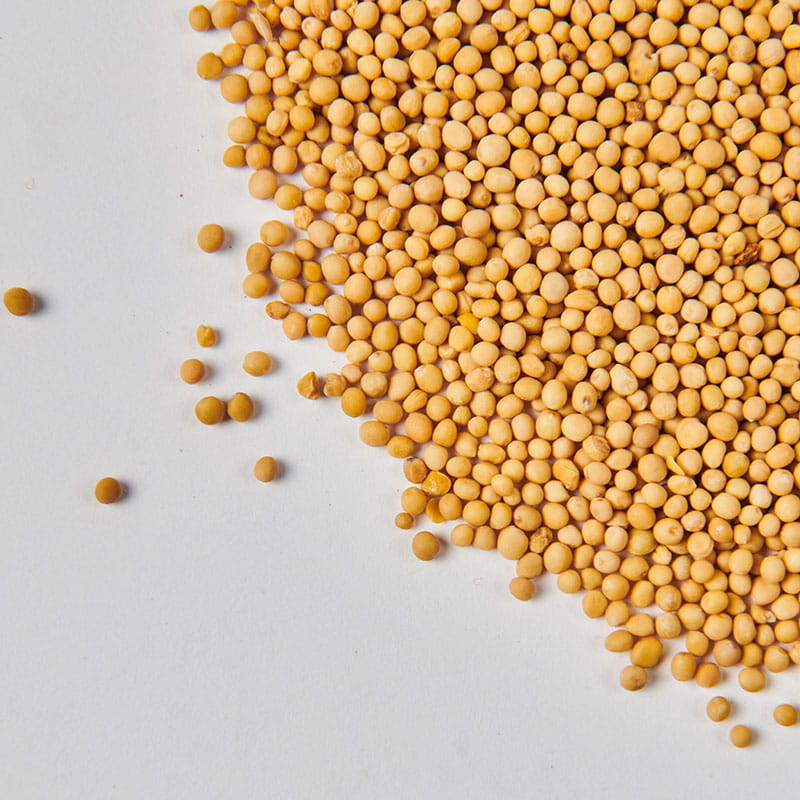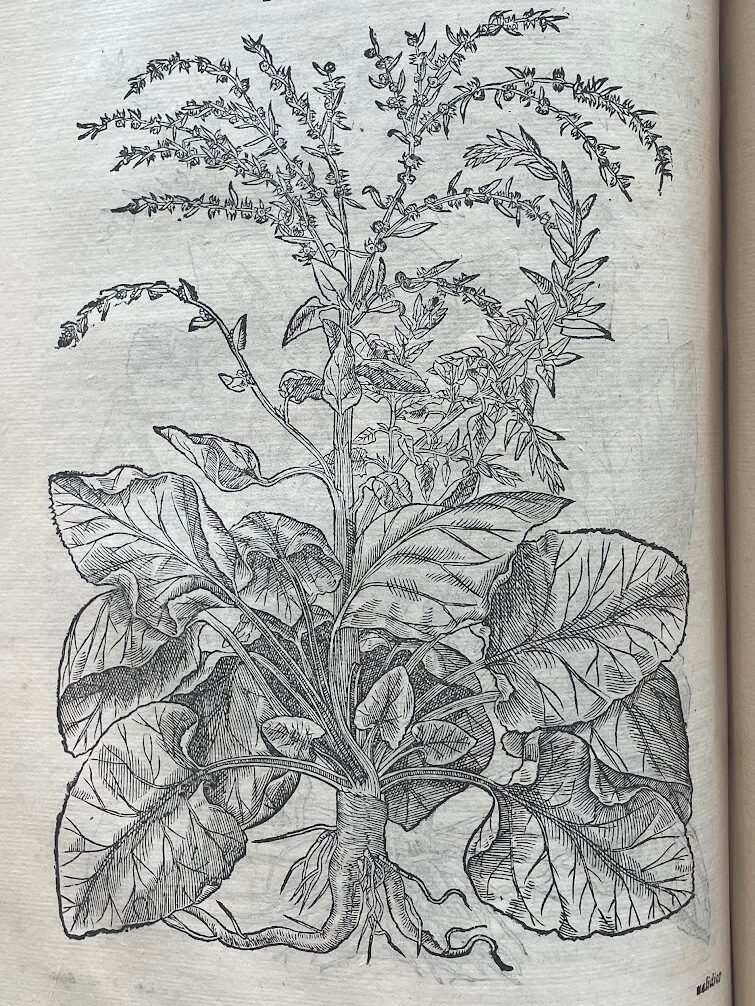Latin name: Brassica juncea
Place of origin: Western Europe, the Mediterranean, and Asia
Description: Brown mustard seeds come from the mustard plant, which has small yellow flowers when in bloom, and green leaves whose size depends on the specific variety (“Brassica Juncea”). Mustard seeds can also come from black mustard (Brassica nigra) and white mustard (Sinapis alba) plants (Cumo, 2013).
Historical medicinal use: Marie de Fouquet suggests combining mustard seeds and figs to create a plaster to help with gout, a type of inflammatory arthritis (Fouquet, 1685).
Modern medicinal use: Recent studies suggest that mustard has a variety of health benefits, including protecting against infections and lowering blood sugar levels (Petre, 2020).
Andrea Mattioli, Pietro. Pietri Andreae Mattholi senensis medici Commentarii in sex libros Pedacii Dioscoridis Anazarbei De medica materia. 1565.
“Brassica Juncea.” Missouri Botanical Garden, www.missouribotanicalgarden.org/PlantFinder/PlantFinderDetails.aspx?taxonid=278099. Accessed 22 Apr. 2024.
Cumo, Christopher. Encyclopedia of Cultivated Plants: From Acacia to Zinnia. ABC-CLIO, 2013.
De Fouquet, Marie. Recueil des remèdes faciles et domestiques, choisis et expérimentés, et très approuvés pour toutes sortes de maladies internes et externes, et difficiles à guerir. 1685.
Petre, Alina. “Is Mustard Good for You?” Healthline, Healthline Media, 10 Jan. 2020, www.healthline.com/nutrition/is-mustard-good-for-you. Accessed 22 Apr. 2024.

